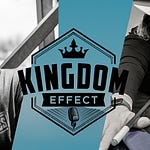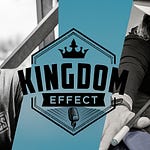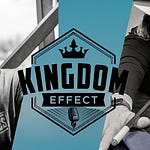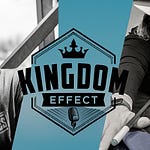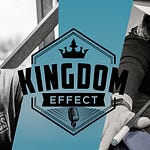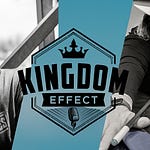Find Kevin at kevinebeasley.com
Find Kevin on Facebook
Find the “Buckshot” on Facebook
Find the Kingdom Effect on Facebook
Episode Summary
Hosts Kevin Beasley and “Buckshot” Buckley sit down with Thomas Hunter Mitchell, Director of CAC Hope House, to explore the devastating reality of childhood trauma and the innovative therapies helping kids reclaim their lives. What starts as a conversation about a unique case involving a therapy dog named Pacey becomes a raw examination of how trauma affects everyone involved—including the helpers.
Key Guest
Thomas Hunter Mitchell - Director of CAC Hope House (North Shore, New Orleans)
Former trauma therapist at Carl Perkins Center
Serves 350+ child abuse victims annually (ages 2-17)
Expert in pediatric PTSD and evidence-based trauma treatments
The Pacey Story: When Masks Became Nightmares
The episode's centerpiece is the remarkable case of "Ashley," a 6-year-old sexual assault victim who developed a severe phobia of masks after her perpetrator wore one during the abuse. Her symptoms were devastating:
Panic attacks at school and stores during Halloween
Incontinence and inability to accept physical affection
Nightmares and fear of everyday situations
Even associated April Fool's Day with masks
The breakthrough: Using Pacey, a gentle golden lab therapy dog, Thomas helped Ashley create new, positive associations with masks. By putting colorful paper plate masks on the dog during therapy sessions, they gradually retrained her brain to associate masks with safety rather than danger.
The result: Ashley is now thriving, demonstrating the power of innovative, individualized trauma therapy.
Trauma by the Numbers
350 children served annually at Hope House alone
45 child trafficking victims in 2024 (3x increase from 2020)
160,000 US children lost parents to COVID-19
750+ Child Advocacy Centers operate nationwide
What is Trauma?
Thomas defines trauma simply: "Any experience that can result in emotional, physical, or life-threatening injury." It's not just major events—most humans over age 7-8 have experienced some form of trauma.
The Hidden Cost: Vicarious Trauma
Perhaps the episode's most sobering revelation is how helping trauma victims traumatizes the helpers. Thomas and Buckley share raw stories of:
Middle-of-the-night phone calls between colleagues
Physical stress responses (white knuckles while driving)
Relationship damage and isolation
Substance abuse as coping mechanisms
Warning signs include:
Hypervigilance and sleeplessness
Becoming reclusive at home
Physical tension and stress responses
Difficulty "turning off" after work
Protecting the Protectors
Hope House has implemented innovative support systems:
Free therapy for all staff (fully reimbursed)
Monthly vicarious trauma yoga sessions
Flexible scheduling to prevent burnout
Transition rituals (like physically brushing feet on doormat before leaving work)
30-minute decompression rule before engaging with family
The COVID Factor
The pandemic has created additional trauma for children through:
Loss of routine and predictability
Masked interactions reducing emotional connection
Secondary trauma from stressed parents
Isolation and uncertainty
Signs of Childhood Trauma
For parents, teachers, and caregivers to watch for:
Heightened anxiety and hypervigilance
Sleep disturbances and nightmares
Regression in behaviors
Difficulty with physical affection
Fear responses to specific triggers
Academic or social difficulties
The Cliff Analogy
Thomas uses a powerful metaphor: imagine trauma like a cliff overlooking the Grand Canyon. Some people start life far from the edge—it takes multiple traumas to push them toward PTSD. Others, due to genetics, environment, or early experiences, start right at the cliff's edge where just one trauma can send them falling.
This explains why trauma affects people so differently—it's not about weakness, but about where someone starts their journey.
Hope and Healing
The episode ends on a note of hope with Thomas describing the "graduation wall" at Hope House, where children place their handprints after completing therapy and overcoming their trauma diagnosis.
The goal: Moving kids from worrying about life-or-death situations to age-appropriate concerns like school dances and friendships.
How to Help
Find your local Child Advocacy Center:
Visit NationalChildrensAlliance.org
Volunteer opportunities available
Simple donations like teddy bears make a difference
Take "Stewards of Children" training (free prevention program)
For Hope House specifically: CACHopeHouse.org
Takeaways for Everyone
Trauma is universal - most people have experienced it in some form
Helpers need help too - vicarious trauma is real and requires attention
Innovation saves lives - sometimes a therapy dog in a paper mask is exactly what's needed
Community support matters - CACs rely on donations and volunteers
Recovery is possible - with proper support, children can heal and thrive
This episode serves as both an education in childhood trauma and a call to action for communities to support the organizations and individuals working to heal our most vulnerable citizens.








